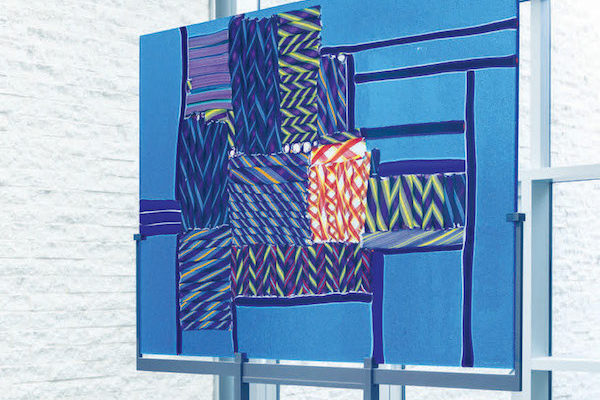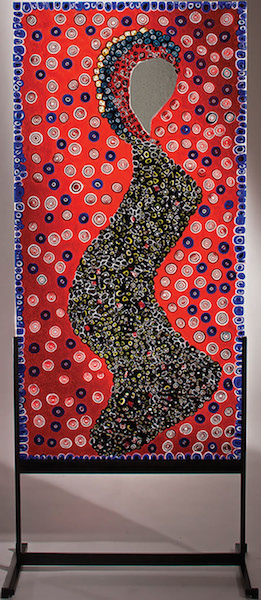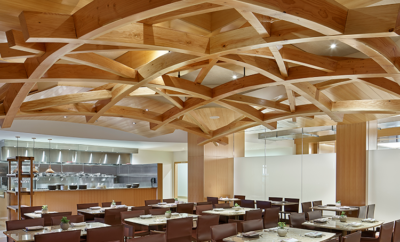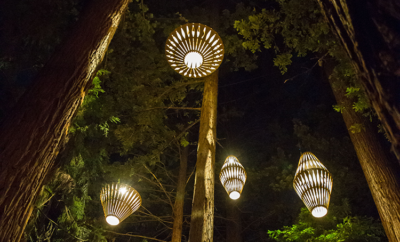 PHOTOGRAPHY COURTESY THE PHILADELPHIA MUSEUM OF ART, PHOTO TIMOTHY TIEBOUT, 2016
PHOTOGRAPHY COURTESY THE PHILADELPHIA MUSEUM OF ART, PHOTO TIMOTHY TIEBOUT, 2016
Exhibition
The Glass Canvas of Lino Tagliapietra
MASTER GLASSBLOWER LINO TAGLIAPIETRA is widely known for his vessels, of which the shapes, dimensions, colors, and patterns have no rival for their beauty and outstanding craftsmanship. His two-dimensional art comes as a surprise to those not familiar with this body of work, but Tagliapietra brings his lifelong love of glass and color to create large panels that are rich and luminescent. Lino Tagliapietra: Painting in Glass is on display through July 16 in the Perelman Building of the Philadelphia Museum of Art, where the panels are shown to their advantage in the Skylit Atrium.

COURTESY LINO TAGLIAPIETRA INC.
Born on the island of Murano, Tagliapietra started working in glass as an eleven-year-old apprentice to Archimede Seguso, and was recognized as a maestro at twenty-one. He has worked in some of Murano’s most famous studios, developing his skills, and as he says, “continuing my education,” experimenting after hours, and visiting art galleries and museums— even the Venice Biennale—to expand his knowledge of art and art history. Tagliapietra is proud of his heritage and his birthplace, as well as of his experience working and teaching in the United States at the Pilchuck Glass School, UrbanGlass, and the Studio at the Corning Museum of Glass, among other institutions, where he was welcomed for sharing his vast knowledge of Venetian glassblowing techniques.

COURTESY LINO TAGLIAPIETRA INC.
Now at age eighty-two, he is still experimenting with this medium, which he approaches with a characteristic humility and sense of wonder. Tagliapietra’s bold use of color and pattern—he cites painters Lucio Fontana and Piet Mondrian as inspirations—combines with the translucent quality of glass to bring a sense of otherworldliness to these panels. Porta con Finestra (Door with a Window), 2011, depicts a colorful house on Burano, an island neighboring Murano known for the lavishly hued exteriors that helped fishermen find their way home at sunset. Campo dei Fiori (Field of Flowers) and Giuditta (Judith), both 2013, show Tagliapietra’s mastery of murrini, the small pieces of glass that have been carefully composed from rods of different colors into a large bundle, heated and stretched, and then cut to size. The process of kiln forming utilizes large sheets of glass—in this case, manufactured by Bullseye Glass Co. in Portland, Oregon—as well as glass powder and frit, combined with Tagliapietra’s murrini, which are all put into a large kiln to form one piece. The panels are set into custom-made wrought-iron frames, giving viewers the opportunity to see the panels from both sides.

COURTESY LINO TAGLIAPIETRA INC.
Tagliapietra has never been afraid to go well beyond the art as he learned it in his many years of working in the studios of Murano. His shapes, color combinations, and compositions reflect his spirit and love for his work. But in his eyes, Tagliapietra is not an artist, despite what others may say about him. “I’m a well-trained artisan,” he modestly declares, and bemoans the fact that a “craftsman” is not looked upon with the same reverence as an “artist.” Even in his eighties he is still looking to try new techniques, realize new projects, and take glass where no one else has. www.pma.org

COURTESY LINO TAGLIAPIETRA INC.












